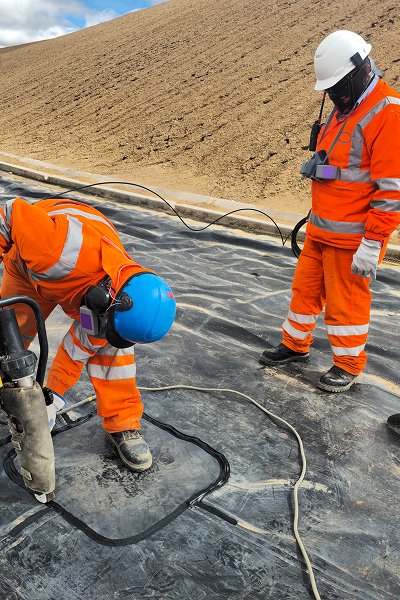Definition and Classification of Geosynthetics:
Geosynthetics refer to synthetic materials used in civil engineering, transportation engineering and environmental engineering, mainly used for enhancing soil performance, anti-seepage, drainage, reinforcement and other purposes. According to different uses and structures, geosynthetics mainly include the following categories:
Geotextile: has good permeability, filtration and isolation functions.
Geogrid: used to reinforce roadbed and retaining walls to improve structural stability.
Geomembrane: has anti-seepage function and is widely used in landfills and water conservancy projects.
Geocomposite: combines the advantages of multiple geotechnical materials and improves adaptability.

Core Competitiveness of Geosynthetics Manufacturers:
Advanced Production Technology and Process
Geosynthetics manufacturers improve product quality and production efficiency by introducing advanced production equipment and process technology. For example, high-precision extruders are used to produce high-density polyethylene (HDPE) geomembranes to improve the material's anti-aging and chemical corrosion resistance.
R&D Capabilities and Innovation Driven
The R&D capabilities of an enterprise determine its market competitiveness. Leading manufacturers continue to develop new geotechnical materials, such as reinforced geogrids, self-repairing anti-seepage membranes, etc., to meet the needs of different projects.
Quality Control System and Standardization Management
Manufacturers strictly implement international standards such as ISO, ASTM, GB, etc., and establish a comprehensive quality management system to ensure reliable product quality. For example, product performance is strictly tested through tensile tests, permeability tests, etc.
Supply Chain Integration and Cost Control
Optimize supply chain management, improve production efficiency, and reduce raw material procurement costs. Ensure the supply of high-quality raw materials and reduce procurement costs by establishing long-term cooperative relationships with upstream raw material suppliers.
Main Application Areas of Geosynthetics:
Transportation engineering (highways, railways, airport runways, etc.)
Water conservancy engineering (reservoirs, rivers, channel anti-seepage, etc.)
Environmental protection engineering (landfills, anti-fouling pads, etc.)
Municipal engineering (underground pipe gallery, subway construction, etc.)
Energy engineering (oil field, mine anti-seepage, etc.)



Market Advantages of Geosynthetics Manufacturers:
Customer customization capabilities; manufacturers can provide customized solutions according to customer needs, such as geosynthetics of different specifications and different material combinations to meet specific engineering needs.
Professional technical support and after-sales service; provide on-site construction guidance, technical training, engineering scheme design and other services to improve customer satisfaction.
Construction solutions and technical guidance; manufacturers cooperate with construction parties to provide efficient and economical geosynthetics construction solutions to ensure project quality.
Logistics distribution system and rapid response capabilities; establish a global logistics distribution network to improve supply efficiency and ensure that customers can obtain the required materials in a timely manner.
Supply chain management and partnerships; strengthen cooperation with raw material suppliers and construction companies, optimize the supply chain, and improve overall competitiveness.


